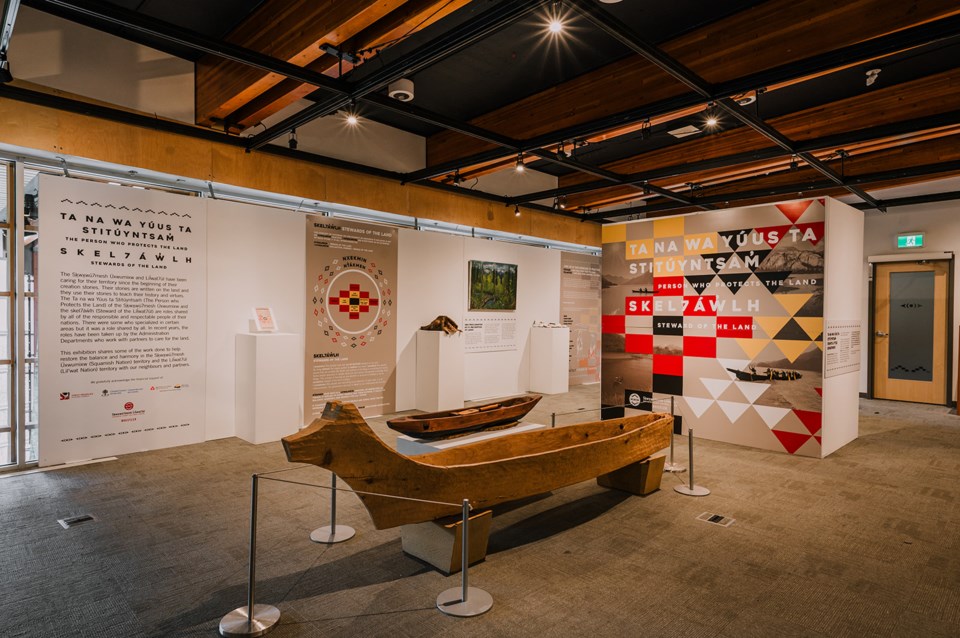In traditional Squamish (Sk̲wx̲wú7mesh Úxwumixw) and Lil’wat (Líl̓wat7úl) culture, stewardship is a communal affair. Taking care of territory is not the job of a select few, but rather an aim shared throughout society.
“Stewards of the Land”, a new display at the Squamish Lil’wat Cultural Centre (SLCC), aims to showcase this worldview. According to SLCC curator Alison Pascal, the exhibit was brought in because it follows up on several previous ones that also explored the history of First Nations land and related struggles for justice and equality.
“If [stewardship] is just one person’s responsibility, we could always put the blame on one person and it’s easier to transfer that blame,” says SLCC assistant curator Dominique Nahee. “Whereas if everybody knows these teachings, we’re all sharing that burden and weight.”
Like most other Indigenous cultures, the Squamish and Lil’wat have traditionally made full use of everything at hand. For instance: while the meat of a hunted animal is consumed, its skins or furs are turned into clothing and bones or antlers are crafted into tools. Even fish bones are returned to the rivers from whence they came after soups and broths are cooked.
Rampant consumerism has eroded those ways with its focus on short-term convenience and instant gratification, but many First Nations people wish to bring the prudent practice of sustainability back into the public eye.
“People go out for coffee and they get single-use cups, single-use plastic items and all of these things. That drive to make single-use items promotes the economy on one hand, but it’s not really sustainable,” Pascal remarks. “As Indigenous people, we look forward to ensuring that our future generations have enough clean air, clean water and good food to eat.
“You can already see the decline in the health of the earth through the melting of all of the glaciers. Ever since I was young, we've been learning about [environmentalism] in school and certain groups have been talking about it—but overall, society isn't listening because plastic bags are finally now widely available. Society is taking a really long time to let go of these conveniences.”
On the edge of a new world
When it comes to safeguarding the biosphere, land and water go hand-in-hand. That’s why “Stewards of the Land” includes a portion on the Howe Sound Marine Stewardship Initiative: a comprehensive assemblage of reports about the evolving hydrology of Howe Sound and the impact of human activities upon its waterways.
Although rapid industrialization in the 20th century had a significant deleterious effect upon Howe Sound ecosystems, the Marine Stewardship Initiative and other local projects are doing their part to restore balance. A key milestone occurred in 2021, when the area was designated as a UNESCO Biosphere Reserve.
Furthermore, the exhibit features an interactive component to engage and educate visitors about sustainable harvesting. In this context, “harvesting” refers not just to agricultural methods but more generally to the way we take resources from our environment. The key, Nahee says, is to leave enough for those who show up after you—even if all you’re doing is picking up rocks during a walk through the forest.
“We're on the edge of looking at a new world and new patterns of weather,” adds Pascal. “As a collective of human beings living in the same place, it's to our benefit to start making changes. It's really important for us as Indigenous people here to educate people that we share this land with, but also to educate our own children that might not learn stewardship at home or school.”
“Stewards of the Land” will be available until June 30. More information can be found at slcc.ca/exhibits/steward-of-the-land/.




